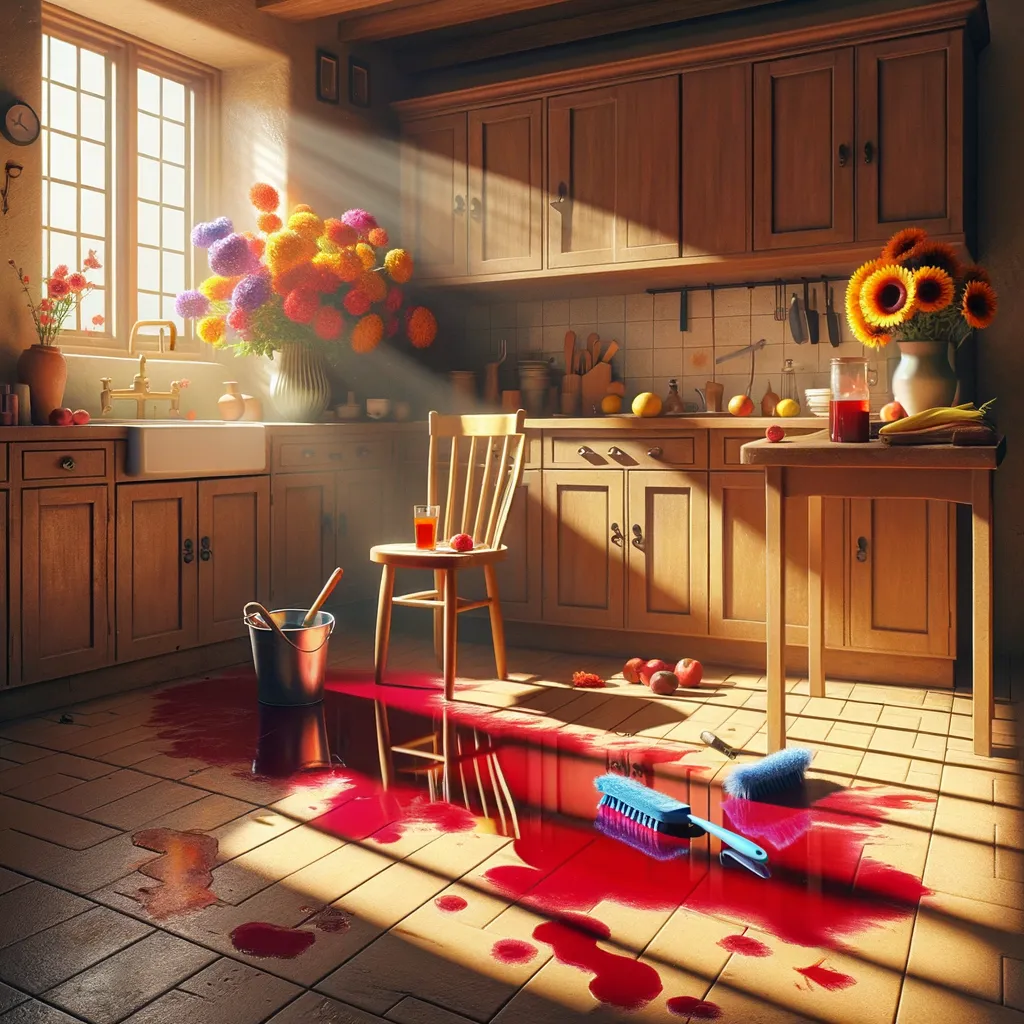Embracing Imperfections: A Journey from Stain to Strength
In the quiet confines of a kitchen, a deep crimson stain on the linoleum floor became an unexpected catalyst for self-discovery. Initially viewed as a mere eyesore, it morphed into a profound symbol of unaddressed emotions and hidden vulnerabilities, each scrubbing attempt revealing the weight of unresolved feelings. One golden evening, the choice to embrace rather than erase shifted the stain from a mark of failure to a canvas of resilience, illuminating the intricate patterns of past heartbreaks and dreams deferred. As the weeks unfolded, this new perspective sparked a journey of confrontation and acceptance, allowing the narrator to reach out, dream again, and ultimately find liberation in vulnerability. In a surprising twist, the stain began to fade, mirroring the inner transformation that revealed the beauty in embracing imperfections and the lessons they impart, prompting a reflective wonder about the other hidden stains waiting to be acknowledged in life.
In the memory of June 5, 2007, I stood in the kitchen, staring down a stubborn stain on the linoleum floor. It was a deep crimson, a remnant of a spilled glass of wine that had seeped into the fibers, mocking my attempts to erase it. The stain became a symbol, a silent testament to something deeper within me—an emotional blockage that I had been too afraid to confront. With each failed attempt to scrub it away, I felt a familiar heaviness in my chest, a weight that mirrored the permanence of that mark.
Days turned into weeks as I tried everything from baking soda to harsh chemicals, but the stain remained, much like the unresolved feelings that had lingered in my heart. I would often find myself reflecting on what it represented—a moment of vulnerability, a failed relationship, a dream deferred. The more I scrubbed, the more I realized that my efforts were futile unless I addressed the root of the issue. I was not just battling a stain; I was wrestling with my own fears, my own insecurities.
One evening, as the sun dipped below the horizon, casting golden rays through the window, I decided to take a different approach. Instead of fighting the stain, I chose to embrace it. I stared at its intricate patterns, the way it told a story of a moment lost and a lesson learned. That day, the stain transformed from an eyesore into a canvas, a reminder that imperfections are part of the human experience. It dawned on me that emotional blockages, like this stain, could not simply be scrubbed away. They required understanding and acceptance.
As I let go of my resentment toward the stain, I found myself peeling back layers of my own emotional armor. I began to explore the moments that had led me to this point—the heartbreaks, the disappointments, and the self-doubt that had woven a tapestry of fear around my heart. Each recollection was like a brushstroke on the linoleum, creating a mosaic of my experiences. In this way, I realized that my past didn’t need to be erased; it could be acknowledged and integrated into who I was becoming.
With newfound clarity, I took a moment to reflect on the stain’s permanence. It would never truly disappear, but it no longer held power over me. I began to see it as a mark of resilience, a reminder of my journey through darkness into light. This shift in perception was liberating, and it sparked a desire to confront other emotional blockages in my life. I understood that the messiness of existence could not be sanitized; it could only be embraced.
As the weeks progressed, I applied this newfound philosophy to other areas of my life. I reached out to estranged friends, confronted past mistakes, and even allowed myself to dream again. The process was not always easy, but with each small step, I felt lighter, as if the weight of that stubborn stain was slowly being lifted from my spirit. I discovered that vulnerability, once a source of shame, was in fact a wellspring of strength.
Then came the unexpected twist. One afternoon, while cleaning the kitchen, I noticed that the stain had begun to fade, almost as if it had transformed alongside me. It was no longer a glaring reminder of failure but a subtle echo of my journey toward acceptance. This realization struck me as profoundly beautiful—the idea that healing often lies in acknowledging our imperfections rather than erasing them.
In the end, the stain became a symbol of triumph, a reminder that emotional blockages can only be overcome when we choose to face them head-on. Each time I walked into the kitchen, I was met with a blend of nostalgia and newfound wisdom. I learned that the process of overcoming is not linear; it is a series of ebbs and flows, victories and setbacks that shape us into who we are meant to be.
As I stepped back to admire my work, I realized that the stain, once a source of frustration, had become a testament to resilience and growth. It taught me that the messy parts of life are often the most important, holding lessons that can lead to profound transformation. I could not help but wonder: what other stains in our lives are waiting for us to acknowledge and embrace, rather than scrub away?
The most profound transformations often arise from embracing imperfections, revealing that the marks of our struggles can become the very canvas of our resilience.



